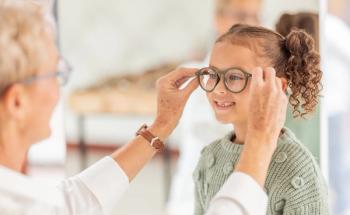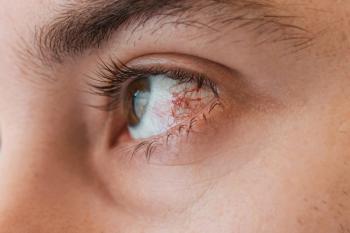
Vision Expo East 2024: Resetting the ocular surface with Rinsada
Mile Brujic, OD, FAAO, speaks on the power of Rinsada to bust biofilms at Vision Expo East 2024.
At Vision Expo East 2024 in New York City, Mile Brujic, OD, FAAO, spoke to Optometry Times about the power and ease of use of Rinsada to clear biofilms from the ocular surface.
Video transcript
Editor's note - This transcript has been edited for clarity.
Mile Brujic, OD, FAAO:
Hi, my name is Mile Brujic. I'm a partner of a 4 location practice in Northwest Ohio, Premier Vision Group. I'm here at Vision Expo East 2024. I've had the good fortune and honor to be asked to speak in lecture to colleagues regarding topics around ocular surface disease, and I'm specifically here at the Rinsada booth, just really embracing the new technologies. We're at a place, especially in ocular surface disease, where we need to continually start challenging ourselves and rethinking the way that we're managing these conditions. And I almost feel that resetting the way we establish the appropriate protocols is critical. And Ridsada is one of the ways that we can actually do that with patients.
So we just saw our Rinsada demonstration and I think that's the most important thing with every technology, 1: we understand clinically what does it look like? What type of timeframe is it going to take? What type of complexity or ease of use does it have? And then the second thing is, what patients will benefit from it? So the first is you kind of saw what it actually looks like in clinic. So it's a relatively easy procedure and most individuals, when we actually describe it to them, they're actually encouraged by it. They want it, for individuals that have ocular surface disease, specifically dry eye, allergic conjunctivitis, these patients are almost asking how they can actually take their eyeballs out, sometimes, and rinse them. So we give them the ability to do that in a clinically feasible way.
But for me, personally, I've had to reset the way that I think about ocular surface disease a little bit, we often times manage flares, but I will consider reactively. We dose more medication, we consider more procedures, when in actuality we could do those things, or we could also do something immediately right now in the chair, which is really reset that individual's new normal. And that's where the benefit of this comes in. The simplicity of the design is the brilliance of it as well, because it gives us a real way clinically, to very, very easily do this for patients. So it's incumbent upon us clinically to 1, understand what the procedure actually looks like in the office, which you had the good fortune to be able to see and witness firsthand, and the second thing is understanding what patients would benefit from it, and it is those dry eye patients, those ocular surface patients. I just had a patient who said, "Yeah, I just got all this dust in my eyes, I feel like I need a good rinse." Well, prior to that we didn't have a really good, controlled way to do it.
I think some of the best innovation comes from when clinicians actually collaborate with industry, the companies that actually create the devices that we're utilizing. We really have a unique situation here where a colleague actually developed for Rinsada, who's just a phenomenal physician, had this concept and he took it actually to fruition to really deliver clinically what we can actually utilize now on patients through Rinsada. So kudos to him, kudos to his efforts in order to deliver this technology, because now we really have a way to essentially reset the ocular surface with this technology. Rinsada can give us a better starting point on baseline now to really get all those excessive inflammatory mediators or markers off of the surface of the eye, and really continue or start the clinical pathway for patients and getting better ocular surface systems.
So if I was to ask optometrists and colleagues just one thing for 2024, what's our theme, it would be embrace the evolution. Things are changing very fast, not only in the way we're understanding things about the eye in the visual system, but also the technologies that are being delivered to diagnose and treat these ocular conditions. So again, really think about understanding where the of use is coming from. What is that, what's the new information that we have accessible, and how are we going to embrace that in our clinical practices and understanding the protocols and procedures that are going to get put into place? If you think about that key phrase for 2024, you will be prepped to manage really the nuances that exist in our practices.
Vision Expo East is one of these conferences where you really get a chance to get firsthand information, technology utilization of the products that we actually learn about in the didactic classes that we're in. So I challenge you all whenever you're at your next conference, get into the exhibit hall and really work on understanding those technologies that you're looking into, get a sense for how it feels on the eye, how it's working, how it's functioning, and you really will understand those technologies that are readily incorporatable into your practices.
Newsletter
Want more insights like this? Subscribe to Optometry Times and get clinical pearls and practice tips delivered straight to your inbox.



















































.png)


